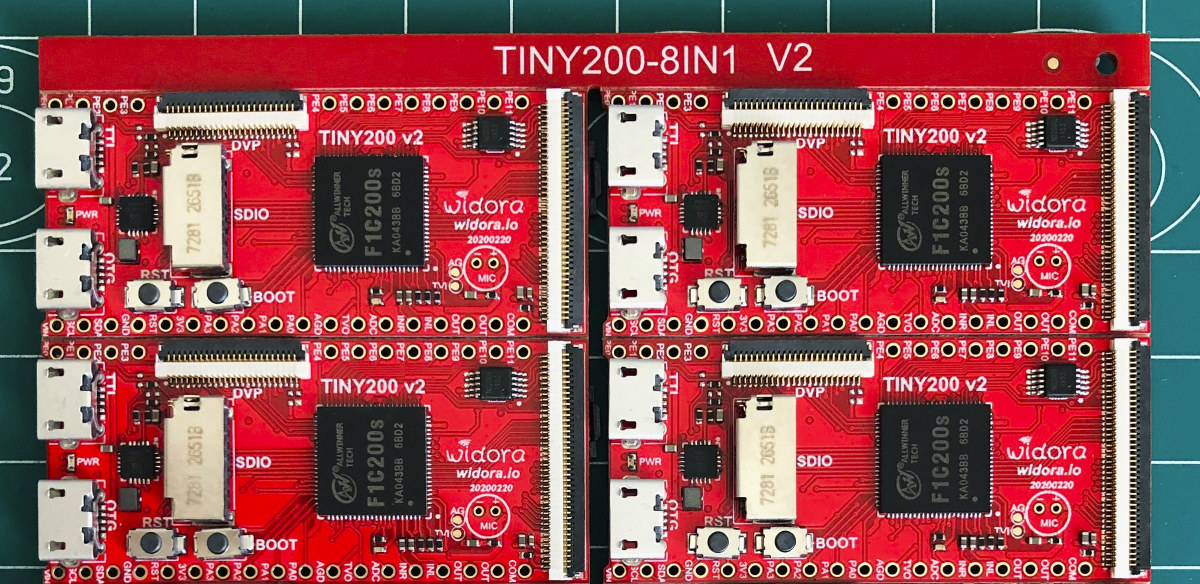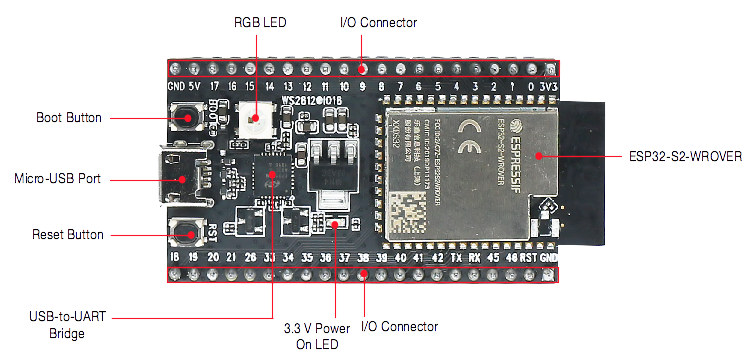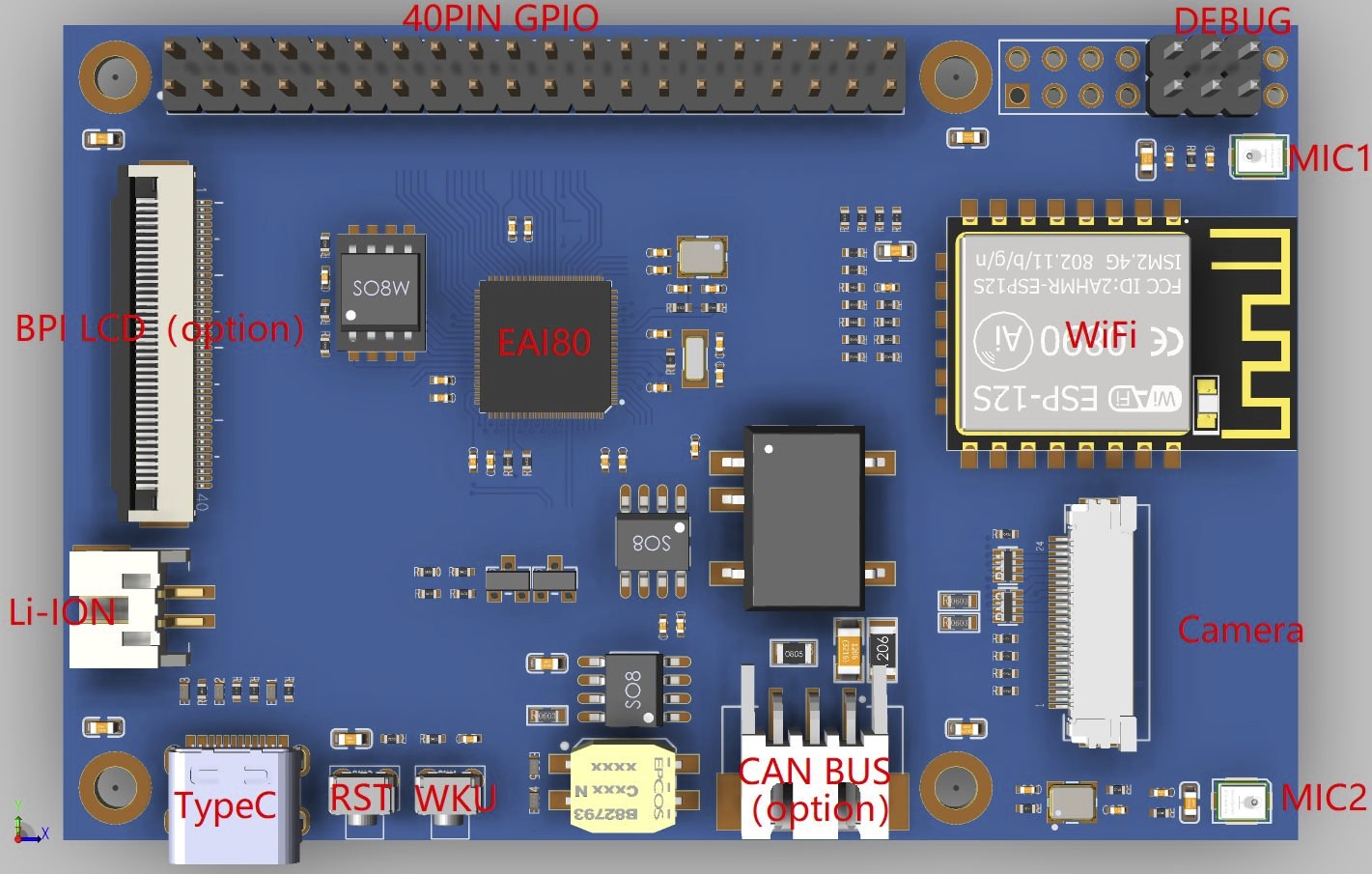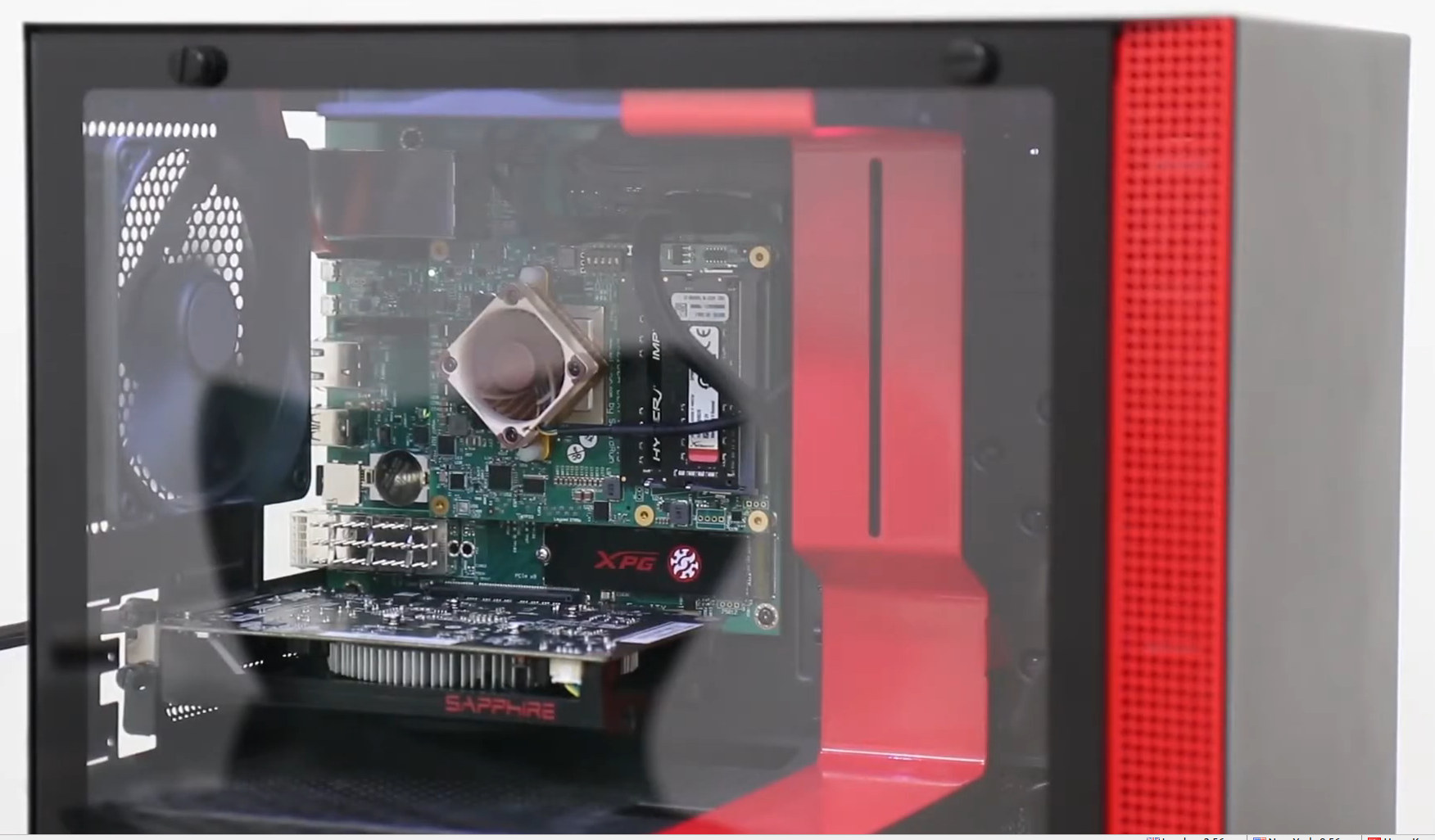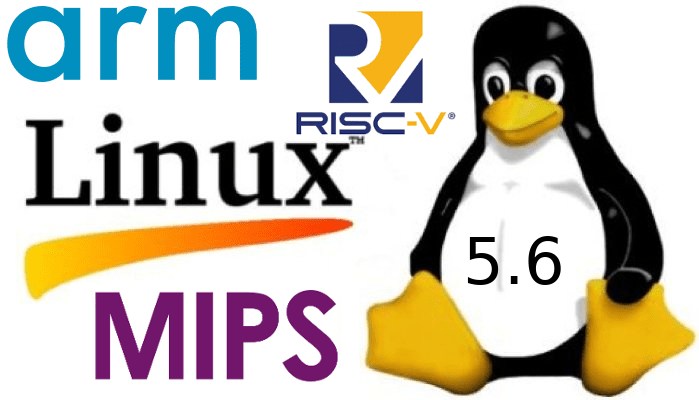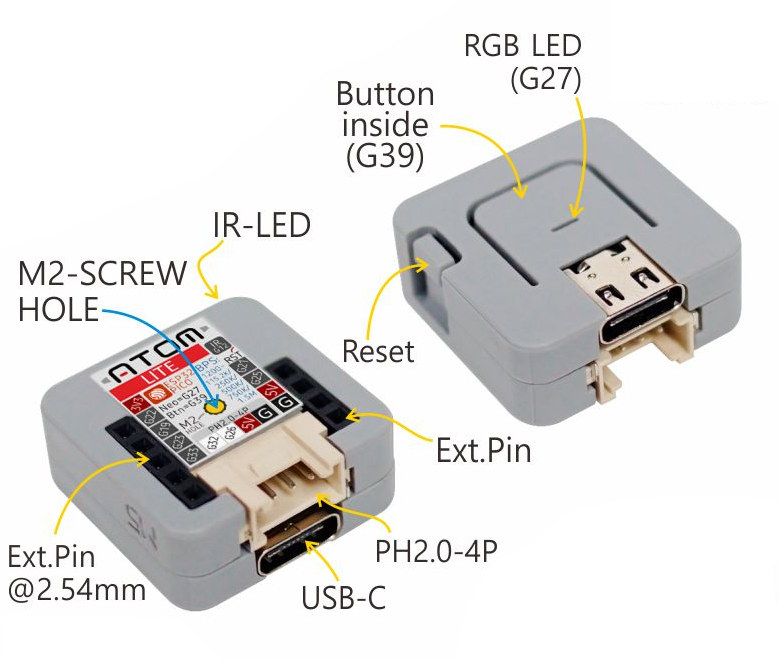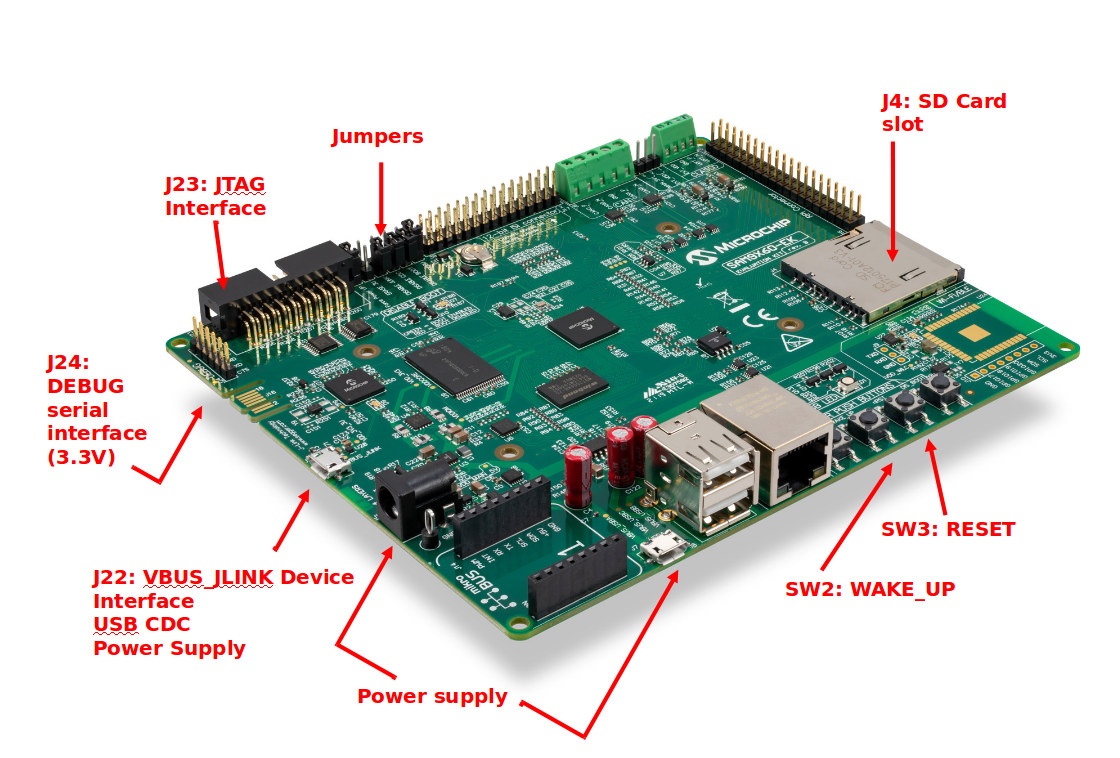Widora TINY200 is a tiny ARM9 development board equipped with Allwinner F1C200s with a DVP camera interface compatible with OV2640 / 5640 sensor, an audio amplifier, and various storage options from a 16MB SPI flash to a 512MB SD NAND flash. I first heard about the processor when I wrote about Microchip SAM9X60 ARM9 SoC last month, and some people noted there were other fairly new ARM9 SoCs around such as Allwinner F1C200s that also includes 64MB RAM so you can run Linux without having to connect external memory chips. Widora TINY200 V2 specifications: SoC – Allwinner F1C200s ARM926EJS processor @ 400-600 MHz (Overclockable to 900 MHz) with 64MB DDR1 RAM Storage – 16MB SPI NOR flash or 128MB NAND flash and MicroSD card slot or 512MB SD NAND flash. Display I/F – 40-pin RGB FPC cable for resistive touch screens; additional 6-pin FPC cable for capacitive touch support Camera […]
ESP32-S2-Saola-1 Development Board is Now Available for $8
Espressif ESP32-S2 WiFi SoC mass production started at the end of February 2020, and soon enough we started to find ESP32-S2 SoC and modules for $1 to $2 on sites like Digikey, but so far we had not seen ESP32-S2 development boards for sale. The good news is the breadboard-friendly ESP32-S2-Saola-1 development board has started to show up for $8 on resellers such as Mouser and Digikey albeit with a lead time of 8 to 12 weeks. ESP32-S2-Saola-1 specifications: Supported modules – ESP32-S2-WROOM(-I) & ESP32-S2-WROVER(-I) with 4 MB SPI flash and for ESP32-S2-WROVER modules only, 2 MB PSRAM USB – 1x Micro USB port for power and programming / debugging via USB-to-UART bridge Expansion – 2x 20-pin I/O headers with SPI, I2S, UART, I2C, touch sensors, PWM, etc… Misc – Boot and reset buttons, RGB LED, 3.3V power on LED Power Supply (3 methods) 5V via Micro USB port (default) […]
Edgeless EAI-Series Dual Arm Cortex-M4 MCU Features a 300 GOPS CNN-NPU
Microcontrollers will have an important role to play in AIoT (AI + IoT) applications as they provide the lowest cost and power consumption. Performance is limited but we start seeing MCUs with AI accelerators such as GreenWaves GAP9 multi-core RISC-V microcontroller or Kendryte K210 RISC-V MCU with a KPU AI accelerator. Another option is by Edgeless Semiconductor Co. Ltd (零边界集成电路有限公司) based in Zhuhai, China, and more specifically its Edgeless EAI-Series dual-core Arm Cortex-M4 microcontrollers equipped with a 300 GOPS CNN NPU. Edgeless EAI specifications: CPU – Dual Arm Cortex-M4F @ up to 200Mhz, with DSP instructions, I/D cache for high performance; 500DMIPS/1.25DMIPS/MHz (Dhrystone2.1) AI Accelerator – CNN-NPU clocked at up to 300MHz with 300 GOPS peak throughput; 144MAC/cycle, EER up to 1TOPS/W, for image recognition scenario. Support major CNN Models including Resnet-18, Resnet-34, Vgg16, GoogleNet, Lenet, etc.. Support Convolutional kernel size 1~7 Support Channel/Feature No. up to 512 Support Max/Average […]
This is what HoneyComb LX2K 16-core Arm Workstation Looks Like (Video)
Back in February 2019, while referring to Arm server, Linus Torvalds famously said: I can pretty much guarantee that as long as everybody does cross-development, the platform won’t be all that stable. Or successful. … If you develop on x86, then you’re going to want to deploy on x86, because you’ll be able to run what you test “at home” (and by “at home” I don’t mean literally in your home, but in your work environment). … Which in turn means that cloud providers will end up making more money from their x86 side, which means that they’ll prioritize it, and any ARM offerings will be secondary and probably relegated to the mindless dregs (maybe front-end, maybe just static html, that kind of stuff). SolidRun had already worked on products with NXP LX2160A 16-core Arm Cortex A72 processor and found out it could be a match to make a powerful […]
Linux 5.6 Release – Main Changes, Arm, MIPS & RISC-V Architectures
Linus Torvalds has just announced the release of Linux 5.6 on the Linux Kernel Mailing List: So I’ll admit to vacillating between doing this 5.6 release and doing another -rc. This has a bit more changes than I’d like, but they are mostly from davem’s networking fixes pulls, and David feels comfy with them. And I looked over the diff, and none of it looks scary. It’s just slightly more than I’d have preferred at this stage – not doesn’t really seem worth delaying a release over. So about half the diff from the final week is network driver fixlets, and some minor core networking fixes. Another 20% is tooling – mostly bpf and netfilter selftests (but also some perf work). The rest is “misc” – mostly random drivers (gpio, rdma, input) and DTS files. With a smattering of fixes elsewhere (a couple of afs fixes, some vm fixes, etc). […]
M5Stack ATOM is a Compact, Fully Integrated ESP32 Development Kit
When working on a project you may need an MCU or MCU board, an external display, a breadboard, and other accessories like sensors and jumper cables. It does the job, but it can be messy. Recently, we wrote about M5Stack M5StickV AI camera, but the company is better known for its ESP32 IoT development kits enabling neater project thanks to hardware that integrates MCU, I/O headers, display, and sensors into an enclosure. Their latest offerings are ATOM series toolkits that come in two versions: ATOM Lite and ATOM Matrix. Let’s have a look at both. M5Stack ATOM Lite Specifications: SiP – ESP32-PICO-D4 system-in-package with ESP32 dual-core processor with WiFi 4 and Bluetooth 5.0/5.1 Storage – 4 MB flash Crystal oscillator and passive components USB – 1x USB Type-C port Expansion 9-pin header with 6 GPIOs compatible with jumper cables 4-pin PH2.0 connector with 2x GPIO, 5V and GND Misc – […]
ARM9 in 2020 – Meet Microchip SAM9X60 SoC & Evaluation Kit
In my first job, I wrote code for a MIPS processor for VoIP phones, then I switched to NEC/Renesas MCUs for CD and DVD players, before going back to Linux and my first experience with an Arm processor: Cirrus Logic EP9307 with a single ARM9 (ARM920T) core clocked at 200 MHz. That was in 2005, and according to Wikipedia various ARM9 cores were released between 1998 to 2006, and now such cores are not recommended for new IC designs with most companies now building their chips around Arm Cortex-A/M/R cores. At the end of last year, we wrote about Banana Pi BPI-F2S SBC based on Sunplus SP7021 “Plus1” quad-core Cortex-A7 processor with ARM9 and 8051 co-processor. Odd enough but at least the ARM9 core is not the main processor, however, while looking at the upcoming Linux 5.6 Linux kernel log I read an entry about a new SAM9X60 ARM926-based SoC […]
Arrow Embedded To Go Free Online Conference, and 3,000 Development Boards Giveaway
With the coronavirus outbreak on-going, many events are either canceled or moving online. Arrow Electronics has now announced what appears to be a completely new online event. Embedded To Go virtual technology exhibition for embedded systems will take place on April 1-3, 2020, and offer technical presentations, information on newly launched technology, and access to Arrow’s sales and engineering teams. The event will entirely free to attend, and you can register online today with a company’s email address. The event will start in about 10 days by so far the virtual “booth map”, “supplier guide” and “lecture area” are inaccessible. We only know what the event should consist of thanks to an article on EENew Embedded: Technical presentation webinars will be hosted by leading suppliers covering AI, IoT and Edge computing, precision measurement, high-performance computing, intelligent condition-based monitoring, and other technological subjects. Information will also be available in the form […]


